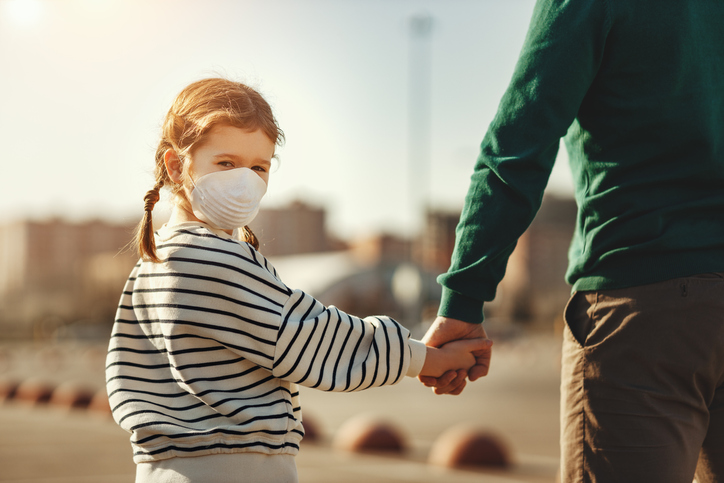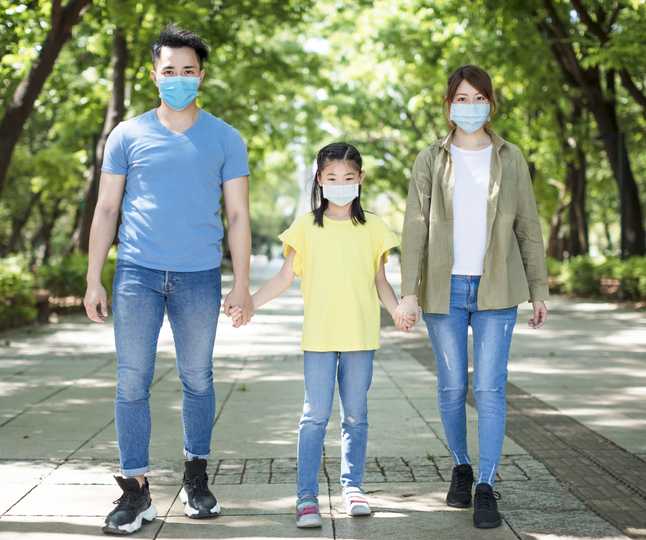Navigating Re-integration for Kids with ADHD: Four Essential Tips
 As things start to open up, we are now faced with dozens of new challenges. Kids want to see their friends, go to carry-out restaurants, be outside and have some fun. How can they safely socialize with peers, play outdoors or visit with extended family? For tweens and teens who are eager to experience “freedom” from parents, how can you monitor what they’re doing to make sure they are safe without being overly intrusive or micromanaging their activities? Kids with ADHD who struggle with impulsivity, emotional control and sound judgment have higher risks for abandoning their masks and social distancing guidelines in the service of doing what feels good RIGHT NOW. This is worrisome but actually manageable. The keys to successfully re-integrating are starting to re-engage slowly (with supervision) and keeping the COVID safety rules clear and simple. Despite our desires to go back to ‘normal’ life, there’s still a lot of uncertainty in our world. Without a vaccine, wide-range testing and public cooperation around safety precautions, there remains a high risk for all of us in terms of contagion, even if the nice spring weather fools us into thinking we are safe. This means that there’s no real rush to re-integrate except in our kids’ minds. They are so fed up with being isolated, attending school online and missing their friends.
As things start to open up, we are now faced with dozens of new challenges. Kids want to see their friends, go to carry-out restaurants, be outside and have some fun. How can they safely socialize with peers, play outdoors or visit with extended family? For tweens and teens who are eager to experience “freedom” from parents, how can you monitor what they’re doing to make sure they are safe without being overly intrusive or micromanaging their activities? Kids with ADHD who struggle with impulsivity, emotional control and sound judgment have higher risks for abandoning their masks and social distancing guidelines in the service of doing what feels good RIGHT NOW. This is worrisome but actually manageable. The keys to successfully re-integrating are starting to re-engage slowly (with supervision) and keeping the COVID safety rules clear and simple. Despite our desires to go back to ‘normal’ life, there’s still a lot of uncertainty in our world. Without a vaccine, wide-range testing and public cooperation around safety precautions, there remains a high risk for all of us in terms of contagion, even if the nice spring weather fools us into thinking we are safe. This means that there’s no real rush to re-integrate except in our kids’ minds. They are so fed up with being isolated, attending school online and missing their friends.  It’s hard normally for kids with ADHD to be patient: now, it’s almost impossible. They want aspects of their lives back and you also want them to. It’s just a question of how, what and when. Plus, transitioning back into the world when there’s no dependable solution for combatting or managing COVID-19 is naturally anxiety-provoking. For kids with ADHD and anxiety, this can feel overwhelming. Collaboration is the key to a successful transition for your family. Work together to create a plan that opens your family up in ways that feel safe to you but include some of their ideas and desires. As the adult, of course, you have the final say. Strategize with them about how to re-integrate in stages, so they can exercise their needs for autonomy and you can see if they are following your guidelines.
It’s hard normally for kids with ADHD to be patient: now, it’s almost impossible. They want aspects of their lives back and you also want them to. It’s just a question of how, what and when. Plus, transitioning back into the world when there’s no dependable solution for combatting or managing COVID-19 is naturally anxiety-provoking. For kids with ADHD and anxiety, this can feel overwhelming. Collaboration is the key to a successful transition for your family. Work together to create a plan that opens your family up in ways that feel safe to you but include some of their ideas and desires. As the adult, of course, you have the final say. Strategize with them about how to re-integrate in stages, so they can exercise their needs for autonomy and you can see if they are following your guidelines.
Here are four tips for easing this transition in your family:
Use guided free choice:
 Many kids, especially tweens and teens, really want some authority over their lives after having no space from their parents. Brainstorm ideas about how to transition and stay open to their ideas. Narrow these down to solutions you agree on. Create a list of appropriate activities and behaviors. Let them pick one of these to try. When kids exert choices over their lives, they feel a greater sense of maturity and responsibility. We want to nurture this right now. If they can’t follow through or refuse to work with you, then they are showing you that they aren’t ready for the freedom they say that they want. Going out and being with other people is an earned privilege.
Many kids, especially tweens and teens, really want some authority over their lives after having no space from their parents. Brainstorm ideas about how to transition and stay open to their ideas. Narrow these down to solutions you agree on. Create a list of appropriate activities and behaviors. Let them pick one of these to try. When kids exert choices over their lives, they feel a greater sense of maturity and responsibility. We want to nurture this right now. If they can’t follow through or refuse to work with you, then they are showing you that they aren’t ready for the freedom they say that they want. Going out and being with other people is an earned privilege.
Start slowly:
It will take some time to build your trust of their consistency and follow-through on your agreements. Decide in advance how you can monitor their actions without being a helicopter parent. Consider trying social interactions where you can see them: in your backyard, going to a park together, outside on the front steps. Are they wearing a mask? Are they staying six to eight feet apart? You can review how things went afterwards and appreciate their efforts when they cooperate.
Share important facts:
This generation has the world at their fingertips. They can research anything they want to know and often they do. But they are also susceptible to misinformation and rumors. Stay informed about the latest COVID safety recommendations and how the virus is spread.  Share these basic facts with your kids (and the sources with tweens and teens who may doubt you). This will help reduce their anxiety and give you a chance to answer their questions. Talk about what recommendations make sense for your family, regardless of what other people are doing. Remind them that people have different levels of comfort with risk and we need to respect that.
Share these basic facts with your kids (and the sources with tweens and teens who may doubt you). This will help reduce their anxiety and give you a chance to answer their questions. Talk about what recommendations make sense for your family, regardless of what other people are doing. Remind them that people have different levels of comfort with risk and we need to respect that.
Plan for setbacks:
Rather than being surprised when kids violate your guidelines and beginning World War 3, predict and explore the difficulties you foresee. Ask them to do the same. Discuss possible consequences for their choices in terms of accountability and learning new skills. If your teen son drives other kids in his car without your permission, even if they kept their masks on, then maybe he’s not ready to drive alone yet.  He’ll need to sanitize the car and have friends over the backyard for a week or two to hang out until he re-establishes your trust. If your sixth grader goes rollerblading and you spot her whizzing by without her mask, then maybe she’s not ready for excursions to the park like that and has to practice activities with her mask on. Be prepared for times when your son or daughter comes up with the most creative ways to work around the rules as only kids with ADHD can do. If this happens, take a deep breath, wait to respond until everybody’s cooled down and then have a calm conversation. Go back to your agreement and review the family’s guidelines. Hang in there. With your practice, you’ll figure this out!
He’ll need to sanitize the car and have friends over the backyard for a week or two to hang out until he re-establishes your trust. If your sixth grader goes rollerblading and you spot her whizzing by without her mask, then maybe she’s not ready for excursions to the park like that and has to practice activities with her mask on. Be prepared for times when your son or daughter comes up with the most creative ways to work around the rules as only kids with ADHD can do. If this happens, take a deep breath, wait to respond until everybody’s cooled down and then have a calm conversation. Go back to your agreement and review the family’s guidelines. Hang in there. With your practice, you’ll figure this out! 
